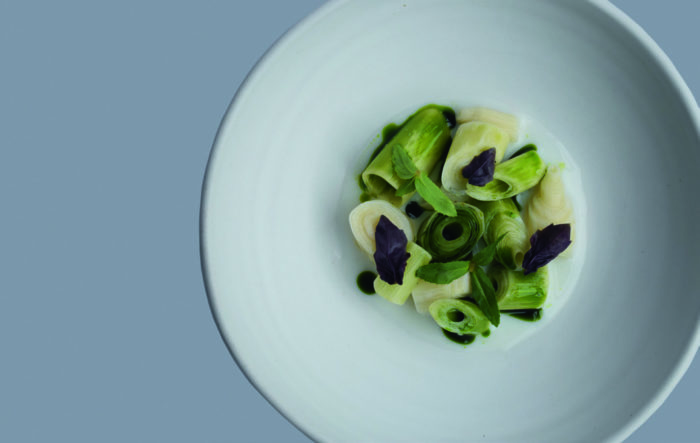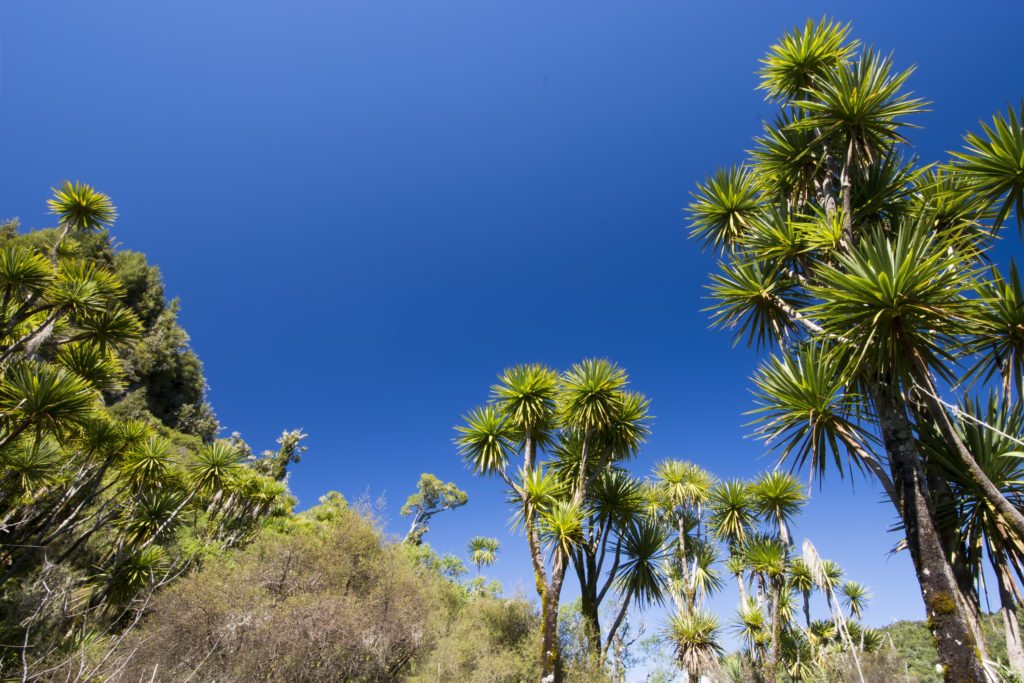Similar in appearance to palm trees, tī kōuka trees (Cabbage trees) can be found standing tall and proud in even the most humble of Kiwi gardens. Its long, narrow leaves bristling in the wind, the sight of these native beauties evokes a sense of relaxation. Ancient Māori had a great amount of respect for the tī kōuka tree. The hard fibre from the trunk was used for housing and waka. The strength and durability of its leaves made it an excellent material for making anchor ropes, fishing lines and even leggings, which Māori would wear when trekking through prickly speargrass in the South Island high country.
What few people realise is that it was once a common source of food. Climb to the top of a tī kōuka tree, place your hand in the middle and you’ll feel a thick shoot in the centre of all its leaves – this is the young tī kōuka shoot.
Young tī kōuka shoots can be eaten raw or cooked. Its flavour is similar to that of cabbage, which is probably how it came to be more commonly known as Cabbage Tree. Available year round, tī kōuka provided one of the very sources of sugar in the ancient Māori diet; the roots of the tree would be dug up, cooked, then grinded into a pulp to release the natural sugar inside. Early Europeans managed to find a way to make alcohol from the plant, which whalers and sealers drank when all other options ran out. There were also a lot of medicinal uses for tī kōuka.
For cuts, grazes and sores, juice from the leaves would be extracted and applied to wounds. Leaves would be boiled to make a tea that would help ease diarrhoea and stomach pains; young shoots would be given to nursing mothers and children suffering from colic.
Like most ancient Māori ingredients, there are no commercial suppliers. To enjoy the beautiful shoots of the tī kōuka tree, you’ll have to cut them from the tree yourself. Once you’ve cut the middle shoot from the center of the tree, peel the outer layers back until you’re left with something similar in appearance to lemongrass. The white end is what you’re after. Eat this raw, or take it home to be steamed or roasted as an accompaniment to fatty meats such as titi (muttonbird) or eel.








